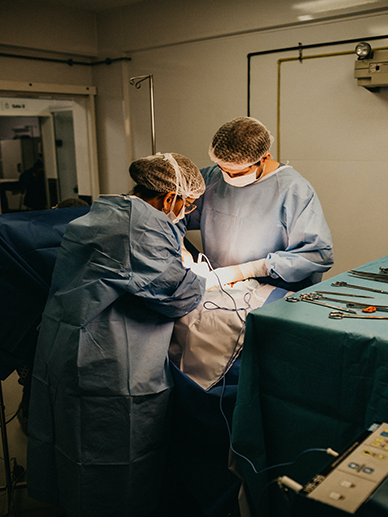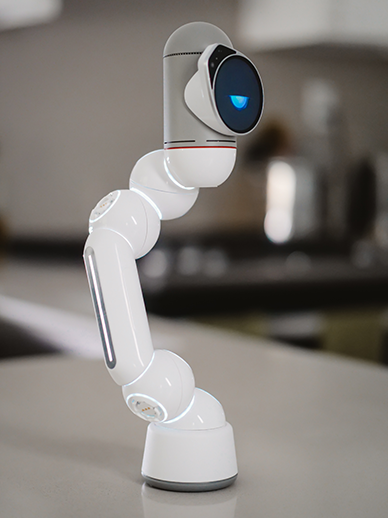Robotic arms have increasingly become a crucial part of our modern world, revolutionizing industries ranging from manufacturing to healthcare. As we look towards the future, it is essential to explore the potential advancements, challenges, and the impact that these robotic arms may have on society. In this blog post, we will delve into the exciting developments on the horizon, the obstacles that need to be overcome, and the potential implications for our everyday lives.
One of the most promising aspects of the future of robotic arms is their increasing integration with artificial intelligence (AI). By combining the mechanical precision of robotic arms with the cognitive abilities of AI, we can expect to see unprecedented levels of automation and efficiency. Robotic arms equipped with advanced AI algorithms will be capable of learning and adapting to new situations, enabling them to perform complex tasks with minimal human intervention. This has the potential to revolutionize industries such as manufacturing, where robotic arms will be able to troubleshoot production issues, make autonomous decisions, and optimize processes for maximum productivity.
The development of collaborative robotic arms
The development of collaborative robotic arms, also known as cobots, is another area of innovation that holds great promise for the future. Cobots are designed to work alongside humans, assisting with tasks that require both precision and flexibility. Unlike traditional robotic arms that require safety barriers and operate separately from humans, cobots can function near humans, making them ideal for applications such as assembly lines, healthcare, and even household tasks. The future of cobots lies in the advancement of their safety features and their ability to adapt to various working environments, facilitating seamless collaboration between humans and robotic arms.
Challenges of robotic arms
However, with these advancements come a set of challenges that need to be addressed.
Here are some important challenges:
- Accuracy and Precision: Ensuring that robotic arms perform tasks with high accuracy and precision can be challenging due to factors such as mechanical limitations or calibration errors. Solution: Implementing advanced sensing technologies and precise motion control algorithms to enhance accuracy.
- Complex Task Planning: Programming robotic arms to perform complex tasks involving multiple steps and variations can be difficult. Solution: Implementing advanced path planning and motion control algorithms to enable efficient and flexible task execution.
- Object Recognition and Handling: Robotic arms may face challenges in accurately recognizing and manipulating objects with varying shapes, sizes, and textures. Solution: Incorporating computer vision techniques to enable object recognition and adaptive grasping algorithms for effective object handling.
- Safety Concerns: Ensuring the safety of operators and the surrounding environment when working with powerful robotic arms is crucial. Solution: Implementing safety protocols such as built-in sensors, emergency stop mechanisms, and collaborative robotic systems that can detect human presence and adjust their behavior accordingly.
- Limited Dexterity and Flexibility: Robotic arms may have limitations in terms of their range of motion, flexibility, or ability to handle complex tasks requiring fine motor skills. Solution: Utilizing advanced robotic arm designs, such as multi-link or flexible arms, to enhance dexterity and flexibility for a wider range of tasks.
- Cost and Complexity: Implementing robotic arms can be expensive and time-consuming, requiring specialized expertise for installation, programming, and maintenance. Solution: Fostering advancements in robotic arm technology to reduce costs, simplify programming interfaces, and enhance user-friendly operation.
- Integration with Existing Systems: Integrating robotic arms into existing production lines or workflows can present compatibility and integration challenges. Solution: Collaborating with experts in system integration to ensure seamless connectivity with other equipment and software in the production process.
- Maintenance and Reliability: Robotic arms, like any mechanical system, require regular maintenance to ensure optimal performance and longevity. Solution: Implementing preventive maintenance routines and utilizing predictive maintenance techniques, such as monitoring system health and using advanced diagnostics, to identify and address issues before they lead to failures.
- Power and Energy Efficiency: Robotic arms consume significant amounts of power, and optimizing energy efficiency is essential to reduce operational costs and environmental impact. Solution: Incorporating energy-efficient components, using regenerative braking systems, and implementing intelligent power management techniques to minimize energy consumption.
- Adaptability to Changing Requirements: Adapting robotic arms to handle different tasks or changing production requirements can be challenging. Solution: Develop modular designs that allow for easy customization, reconfiguration, and the integration of additional sensors or tooling to accommodate evolving needs.
While these challenges exist, ongoing advancements in robotics and automation technologies continue to address and overcome these obstacles.
Certainly! Here are solutions that address and overcome the 10 challenges of robotic arms:
- Accuracy and Precision: Develop advanced calibration techniques and feedback control systems to ensure precise and accurate movements.
- Complex Task Planning: Implement advanced algorithms for path planning and motion control to enable efficient execution of complex tasks.
- Object Recognition and Handling: Combine computer vision algorithms with machine learning techniques to enhance object recognition and develop adaptive grasping algorithms for effective object handling.
- Safety Concerns: Incorporate safety features such as collision detection sensors, force limiters, and human-robot collaboration technologies to ensure safe operation.
- Limited Dexterity and Flexibility: Design robotic arms with additional degrees of freedom, modular configurations, and flexible end effectors to enhance dexterity and adaptability to different tasks.
- Cost and Complexity: Continually advance robotic arm technology to reduce costs, simplify programming interfaces, and enhance ease of use for operators.
- Integration with Existing Systems: Collaborate with system integration experts to develop standardized communication protocols and interfaces for seamless integration with existing production lines.
- Maintenance and Reliability: Implement preventive and predictive maintenance techniques, such as remote monitoring, condition-based maintenance, and proactive system diagnostics, to ensure optimal performance and reduce downtime.
- Power and Energy Efficiency: Develop energy-efficient servo systems, power management techniques, and energy recovery systems to minimize power consumption and optimize efficiency.
By continually advancing technology, investing in research and development, and collaborating with experts in various fields, the robotics industry can address these challenges and overcome them to make robotic arms more efficient, reliable, and adaptable to a wide range of applications.
The potential impact of robotic arms on society
The potential impact of robotic arms on society is vast and multi-faceted. Robotic arms have the potential to bring a significant impact on various aspects of society. Here are some potential areas where their impact can be observed:
- Automation and Industry: Robotic arms can revolutionize manufacturing processes by increasing productivity, improving efficiency, and reducing costs. They can perform repetitive and hazardous tasks with precision, speed, and consistency, leading to higher production rates and improved quality of goods.
- Job Market: While robotic arms can automate certain tasks, they also have the potential to create new job opportunities. As automation increases productivity, businesses can expand, leading to the creation of new jobs in areas such as robotics engineering, maintenance, programming, and system integration.
- Safety and Risk Reduction: Robotic arms can handle dangerous tasks, reducing the exposure of human workers to potentially harmful environments. This improves workplace safety, decreases the risk of accidents, and protects workers from physical harm in high-risk industries like manufacturing, construction, and mining.
- Healthcare and Medicine: Robotic arms have made significant contributions to medical procedures, allowing for precise and minimally invasive surgeries. They enable surgeons to perform intricate procedures with enhanced dexterity and accuracy, resulting in reduced patient recovery time, smaller incisions, and improved treatment outcomes.
- Assistance and Rehabilitation: Robotic arms can assist individuals with disabilities by restoring or enhancing their mobility, independence, and quality of life. Prosthetic robotic arms can provide amputees with the ability to perform delicate tasks and regain a sense of normalcy.
- Agriculture and Farming: Robotic arms can perform tasks in the agricultural sector, such as precision planting, harvesting, and crop maintenance. This can improve efficiency, optimize resource utilization, and help address challenges like labor shortages and food production demands.
Overall, robotic arms have the potential to transform various industries, improve workplace safety, enhance productivity, and create new opportunities for innovation and economic growth. While considerations surrounding ethical implications, skills development, and job displacement should be addressed, the potential benefits they bring to society are significant.
In conclusion, the future of robotic arms is incredibly promising, with advancements in AI, collaboration, and adaptability paving the way for unprecedented integration into various industries. However, to fully realize the potential benefits, society must address the accompanying challenges, such as workforce displacement and ethical considerations. By preparing for these changes, we can harness the power of robotic arms to enhance productivity, improve quality of life, and create a more sustainable and inclusive society. The future is indeed bright for robotic arms, and we must embrace it with careful consideration and foresight.




